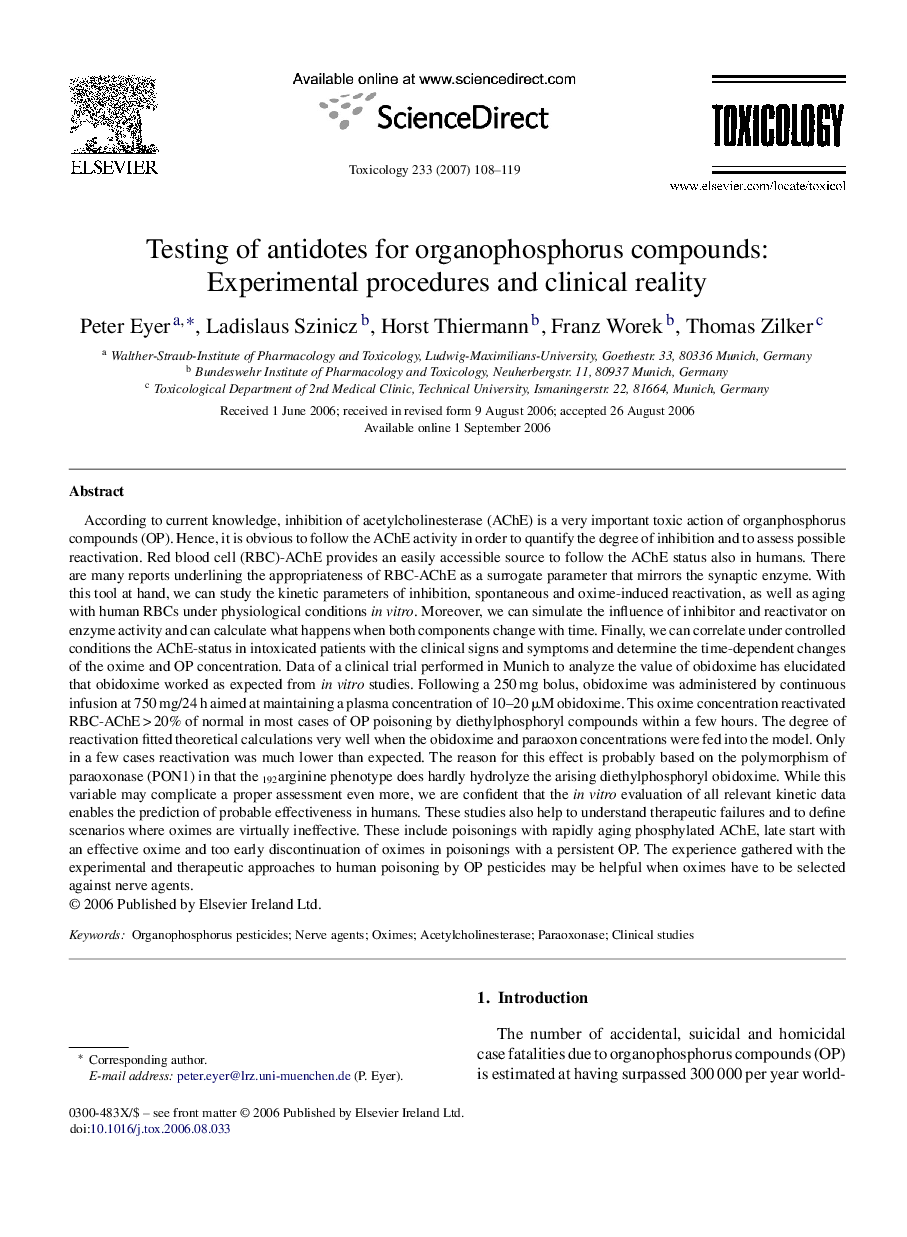| Article ID | Journal | Published Year | Pages | File Type |
|---|---|---|---|---|
| 2597870 | Toxicology | 2007 | 12 Pages |
According to current knowledge, inhibition of acetylcholinesterase (AChE) is a very important toxic action of organphosphorus compounds (OP). Hence, it is obvious to follow the AChE activity in order to quantify the degree of inhibition and to assess possible reactivation. Red blood cell (RBC)-AChE provides an easily accessible source to follow the AChE status also in humans. There are many reports underlining the appropriateness of RBC-AChE as a surrogate parameter that mirrors the synaptic enzyme. With this tool at hand, we can study the kinetic parameters of inhibition, spontaneous and oxime-induced reactivation, as well as aging with human RBCs under physiological conditions in vitro. Moreover, we can simulate the influence of inhibitor and reactivator on enzyme activity and can calculate what happens when both components change with time. Finally, we can correlate under controlled conditions the AChE-status in intoxicated patients with the clinical signs and symptoms and determine the time-dependent changes of the oxime and OP concentration. Data of a clinical trial performed in Munich to analyze the value of obidoxime has elucidated that obidoxime worked as expected from in vitro studies. Following a 250 mg bolus, obidoxime was administered by continuous infusion at 750 mg/24 h aimed at maintaining a plasma concentration of 10–20 μM obidoxime. This oxime concentration reactivated RBC-AChE > 20% of normal in most cases of OP poisoning by diethylphosphoryl compounds within a few hours. The degree of reactivation fitted theoretical calculations very well when the obidoxime and paraoxon concentrations were fed into the model. Only in a few cases reactivation was much lower than expected. The reason for this effect is probably based on the polymorphism of paraoxonase (PON1) in that the 192arginine phenotype does hardly hydrolyze the arising diethylphosphoryl obidoxime. While this variable may complicate a proper assessment even more, we are confident that the in vitro evaluation of all relevant kinetic data enables the prediction of probable effectiveness in humans. These studies also help to understand therapeutic failures and to define scenarios where oximes are virtually ineffective. These include poisonings with rapidly aging phosphylated AChE, late start with an effective oxime and too early discontinuation of oximes in poisonings with a persistent OP. The experience gathered with the experimental and therapeutic approaches to human poisoning by OP pesticides may be helpful when oximes have to be selected against nerve agents.
